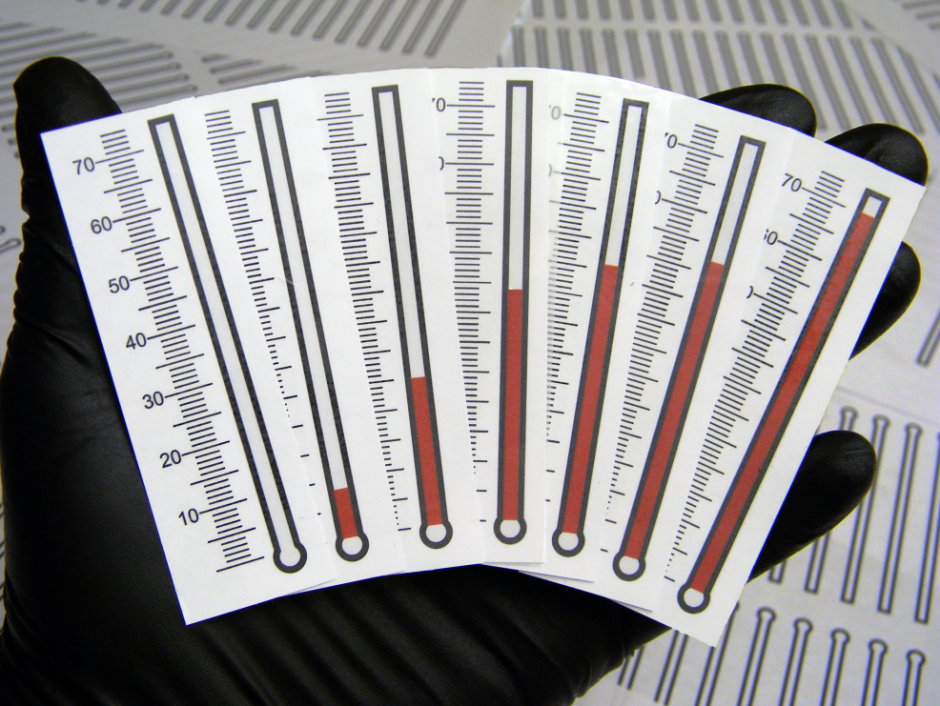Paper ‘chemometer’ chemical concentration tests are cheap and simple

An effort at Colorado State University looks to bring an inexpensive chemical meter to market. The device looks like a thermometer and has appropriately been dubbed the “chemometer” for its abilities to test for chemicals quickly and easily.
At only four cents a piece, the chemometer can test for dozens of chemicals, with that number expected to go up over time. Its creators say that the device will be useful in efforts requiring quick readings and in minimizing site visits.
“I don’t know if it will ever fully replace expensive tests,” said Chuck Henry, professor of chemistry at Colorado State. “It’s useful for rapid screens. Is there a problem and do we need further testing?”
Initial prototypes of the device were designed in a few weeks. About the size of a quarter, Henry says they worked well but weren’t simple enough. The current design, which resembles a thermometer, took about a year.
The chemometer has a wax paper structure. Printed reagents on the paper react to the concentration of a substance in the sample. When applied, the sample solution travels up a track, reacting and changing colors as it goes. A ruler on the device shows the concentration by indicating how far the sample has traveled.
Henry says work continues to make the device better. The current model of the chemometer can measure chemicals important for occupational health, like cadmium, copper or chromium. There are also tests for herbicides, pesticides or flame retardants.
It may be surprising that one device can measure so much while costing so little, but Henry says that’s because the materials are inexpensive.
“We’re able to keep the cost low because that’s the cost of the materials. Filter paper, printing, inexpensive reagents–these things are inexpensive from the beginning. And the price should go down further in mass production,” said Henry.

The chemometer depicts chemical concentrations as distance traveled up the paper gauge (Credit: Cate et al, LOC, DOI:10.1039/C3LC50072A)
From there, Henry sees additional applications in occupational health. It could be used in monitoring blood glucose or antioxidants in the body. The possibilities are great.
“As long as you have the right chemistry on the paper to do the tests. Iron and nickel work great. Copper’s been more of a challenge,” said Henry. “That’s all a solvable problem with time and money put into the development effort.”
No huge effort needs to be put into training people to use the devices, however. Henry says it only takes a few minutes. They only need to know the correlation between the concentration of the sample and the length shown on the ruler.
Quick training and low initial cost make the device good for organizations managing multiple monitoring stations. Using chemometers for initial testing could help them spot which sites need servicing and the devices are a lot easier to carry around. Since they’re made of paper, a ream of them in a backpack could constitute thousands of tests.
“You could visit 100 sites, take samples, and find that only 25 of them need servicing,” said Henry. “That’s a lot of savings.”
Video is a time lapsed demonstration for measuring Ni in two samples. To the right device (sample 1) was added 5 µg Ni, and to the left device (sample 2) was added 10 µg Ni. Assay results are read just like a thermometer, however in this case, the distance of color development is proportional to metal mass.
Top image: The paper-based test is read just like a thermometer, but instead of temperature, the paper strips measure metal content. The above picture shows the typical size of each paper strip; the researcher in the picture is holding seven individual test strips. (All photos and videos: David M. Cate, John Volckens and Charles S. Henry)




0 comments